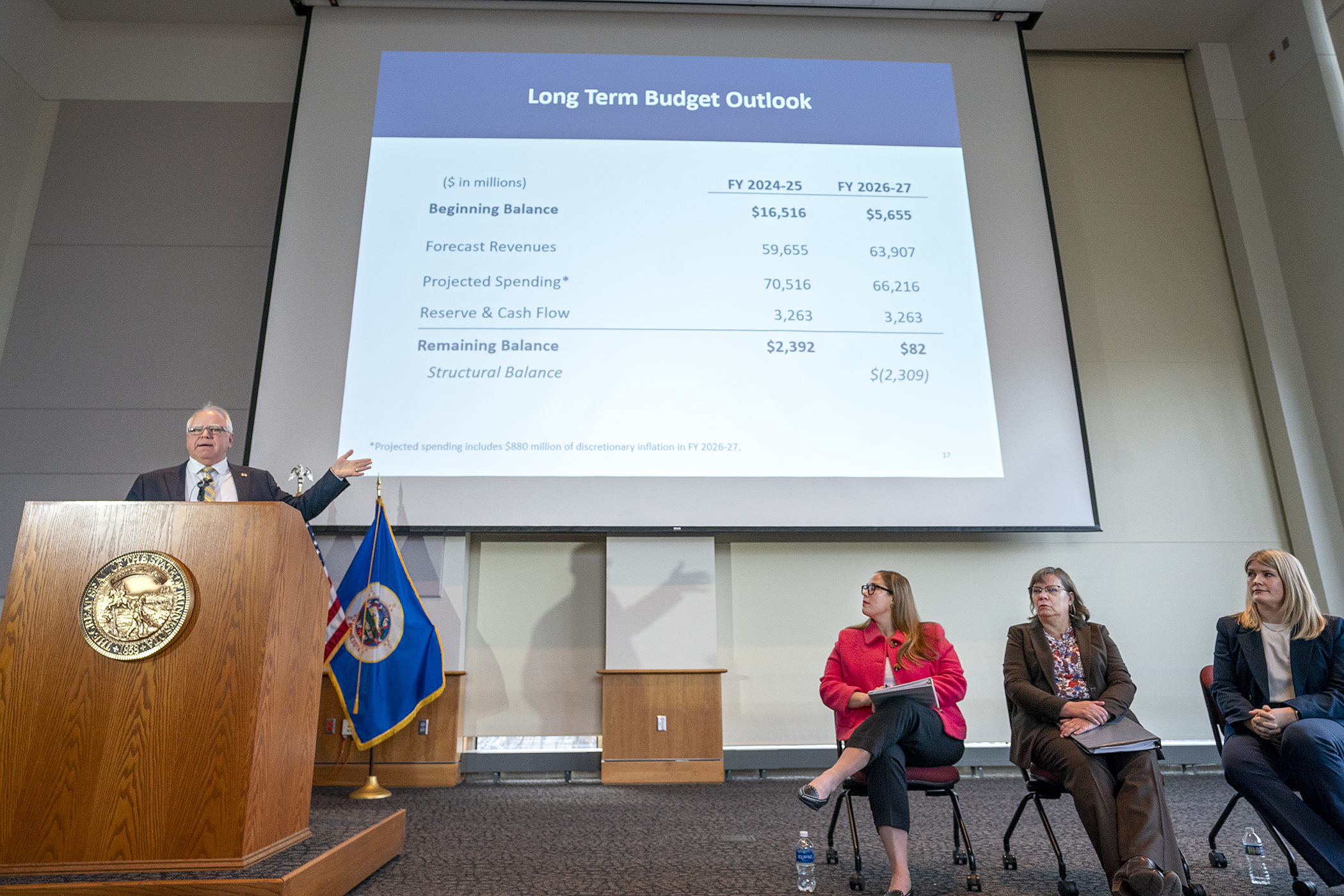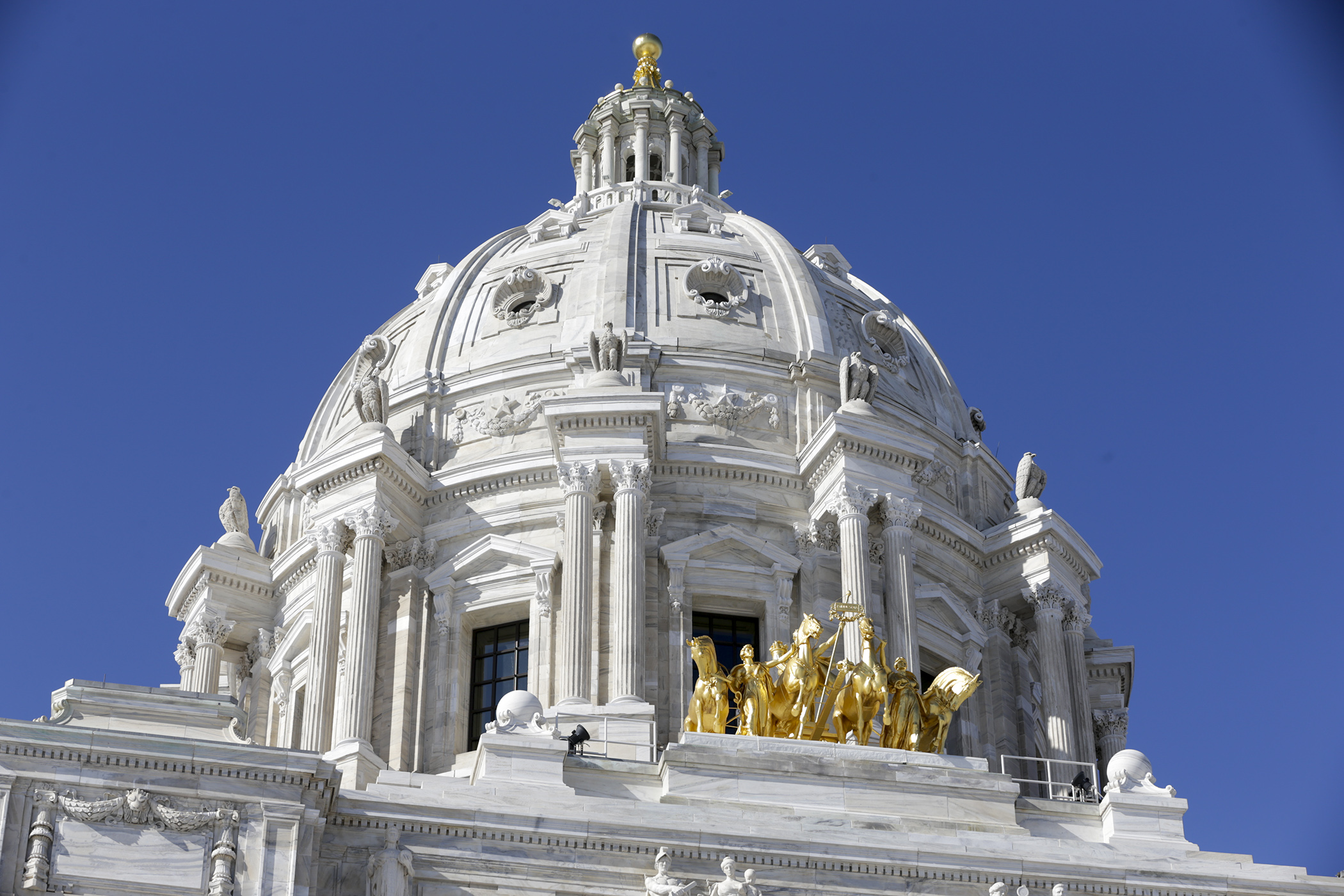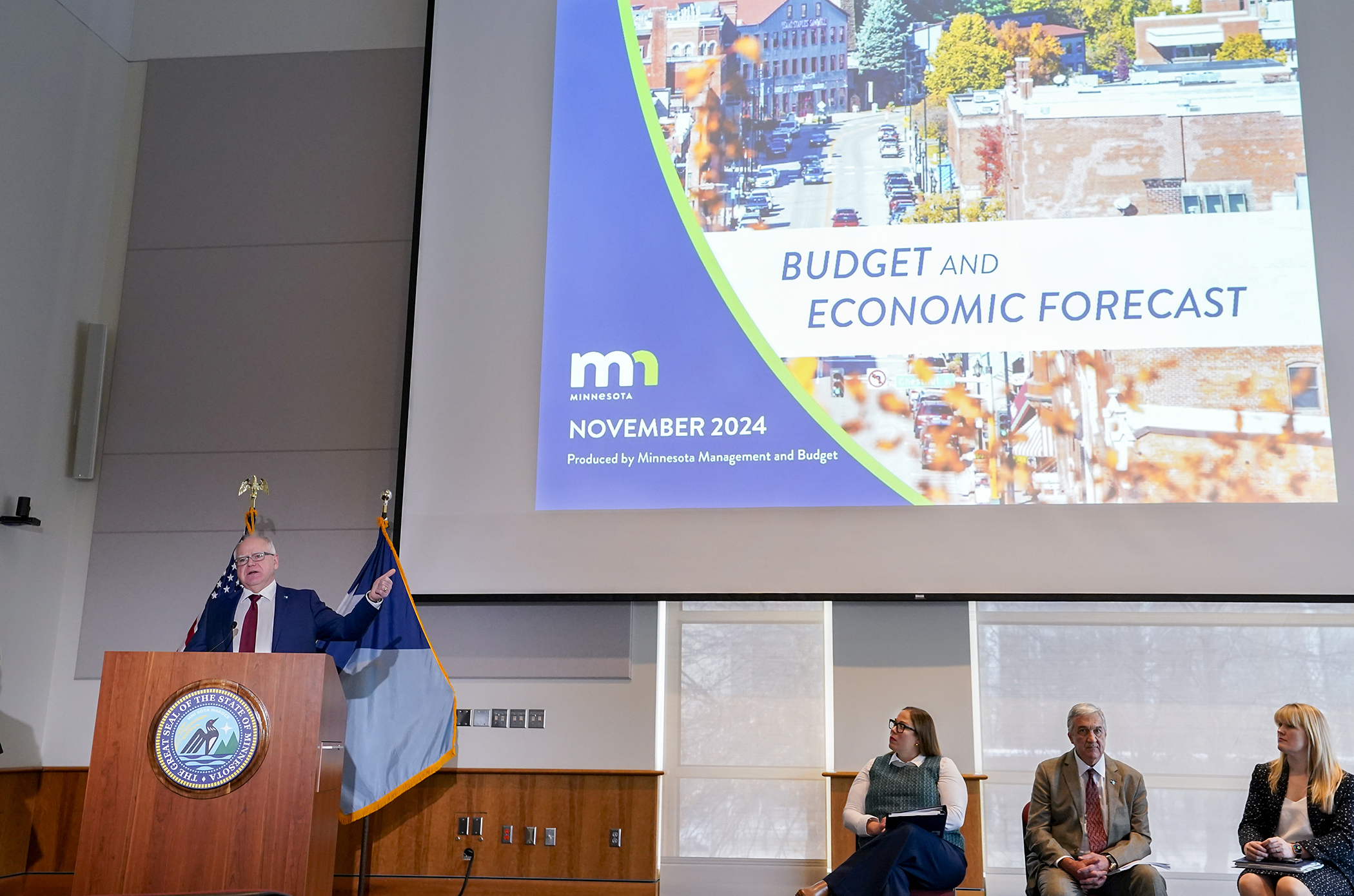State’s budget forecast projects surplus — but warns future less certain

— UPDATED 3 P.M.
The state's financial situation continues to get better — for now.
Minnesota Management and Budget officials released the November 2023 Budget and Economic Forecast Wednesday, saying the state's expected budget surplus is now $2.4 billion for the current fiscal biennium.
That’s an increase of $808 million from the most recent previous estimate that came at the end of the 2023 legislative session. But in a preliminary statement on the forecast, budget officials also warned that a “significant structural imbalance constrains the budget outlook in FY 2026-27.”
While consumer spending and corporate profits were higher than expected, resulting in increased tax revenues in current biennium, MMB officials say higher spending estimates in health and human services and education result in a “negative structural balance in the next biennium.”
The forecast provides the most recent snapshot of the state's financial health. Lawmakers will use it to begin looking at budgeting and policy decisions to be made during the 2024 legislative session, which is scheduled to begin Feb. 12 and must end by May 20.
[MORE: View the presentation slides]
It is the first forecast following a new law that requires inflation to be included on both sides of the ledger in state budget and economic forecasts. When the state was projected to face a significant deficit in 2002, a law was enacted to remove inflation only from the expenditure side of the ledger. Minnesota was the only state with such a law.
Combining the expected budget surplus with an expected structural imbalance of just over $2.3 billion in the 2026-27 biennium leaves a projected $82 million balance at the end of the 2026-27 biennium, said Commissioner Erin Campbell. “(That) provides little cushion when you consider the size of our projected state budget. Such a small balance together with a structural imbalance suggests policymakers will need to be very thoughtful when making budget decisions next year.”
The forecast shows Minnesota’s near-term economic outlook has improved since the 2023 February forecast when the state’s macroeconomic advisor, SPGMI, predicted a mild two-quarter recession, which the U.S. economy has since avoided. Officials said the state’s employment and wage income have grown and raised expectations for continued growth in both areas through 2024.
After that, however, MMB officials now forecast “slower growth in employment and wages than we expected in February.”
[MORE: Current operating budget for the 2024-25 biennium]
The projected surplus heading into the 2023 legislative session was more than $17 billion. Lawmakers then passed a $72 billion two-year budget, the largest in state history.
“We did a lot of great work last year, it's time to implement that and you will have a positive impact on workforce development, positive impact on housing, positive impact on the environment, which is helping us build some of this clean energy economy, but we need to be measured. We need to be cautious,” said Gov. Tim Walz. “ … We're not going to give tax cuts to millionaires and we're not going to spend excessively on things.”
Republicans question if any additional spending is a worthy step to take.
“I'm just very concerned that with $2.4 billion surplus in that 24-25 year that then translates into a $2.3 billion structural deficit in the 26-27 year, like if we do nothing, we will just barely be keeping the budget in balance. And clearly there are all these requests coming in daily for new spending. We cannot afford it,” said Rep. Kristin Robbins (R-Maple Grove).
Capital investment
Campbell said an $830 million general-obligation bonding law in 2024 would stay within state debt guidelines.
“I think it would be shocking if we had a funding bill that was less than a billion dollars because there's always a cash component and a general-obligation component,” said House Speaker Melissa Hortman (DFL-Brooklyn Park). “So the (general-obligation bonding) component at 830 (million), even if we did a very small cash component, we would still break a billion dollars. But that, of course, counts on bipartisan support.”
“If they say that it's going to take another 880 million just to meet keeping up with inflation, I don't know how you can have a bonding bill, you can keep up with inflation, you can have all these other programs,” Robbins said. “ … There was a huge funding bill last year. I think our caucus is open to it, but I think it would have to be limited and targeted.”
Other legislative leaders react
“Democrats have been working hard this year to lower the cost of living and make up for years of inadequate investment in the people of Minnesota,” House Majority Leader Jamie Long (DFL-Mpls) said in a statement. “The new economic projections released today show that our economy is growing, and that’s great news. We’re tackling the rising cost of child care, health care, and housing. We’re building a Paid Family and Medical Leave program. The best way to grow the economy is by growing the middle class, and that’s what Democrats are focused on doing right now.”
Across the aisle, the view is different.
“We started the year with a record $17.5 billion surplus, giving Democrats the chance to pass meaningful tax relief and help make Minnesotans’ lives more affordable. Instead, Democrats squandered the unique opportunity they had to address the economic pressures Minnesotans are facing and, in turn, are now leading the state off a fiscal cliff,” House Minority Leader Lisa Demuth (R-Cold Spring) said in a statement.
“Democrats took the entire surplus and raised an additional $10 billion in taxes so they could go on a spending spree, increasing the state budget by an unsustainable 40 percent. Democrats’ reckless spending has now set us on the path to have a budget deficit in the coming years.”
— Mike Cook contributed to this story
Related Articles
Search Session Daily
Advanced Search OptionsPriority Dailies
Ways and Means Committee OKs House budget resolution
By Mike Cook Total net General Fund expenditures in the 2026-27 biennium will not exceed a hair less than $66.62 billion.
That is the budget resolution approved Tuesday by the House Ways...
Total net General Fund expenditures in the 2026-27 biennium will not exceed a hair less than $66.62 billion.
That is the budget resolution approved Tuesday by the House Ways...
Minnesota's budget outlook worsens in both near, long term
By Rob Hubbard It looks as if those calling for less state spending could get their wish, judging from Thursday’s release of the February 2025 Budget and Economic Forecast.
A state su...
It looks as if those calling for less state spending could get their wish, judging from Thursday’s release of the February 2025 Budget and Economic Forecast.
A state su...